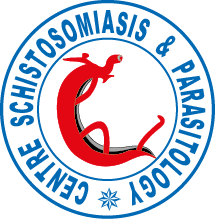DETECTION OF HYBRID SCHISTOSOMA HAEMATOBIUM GROUP SPECIES IN CAMEROON BY PCR-RFLP OF THE SECOND INTERNAL TRANSCRIBED SPACER (ITS-2)
Abstracts
Among the species of schistosomes infecting humans, Schistosoma haematobium is responsible for the largest number of infections in sub-Saharan Africa with an estimated 112 million people infected with this species. Schistosoma haematobium has been shown to be able to interbreed with its closely related sister species, resulting in hybridisation affecting the epidemiology of these parasites. Schistosoma haematobium, Schistosoma mansoni, Schistosoma guineensis and Schistosoma bovis have all been reported in Cameroon. In this study, S. haematobium samples from 8 villages in Cameroon were molecularly analysed to identify hybrid schistosomes. Methods; PCR-RFLP analyses of the second internal transcribed spacer (ITS-2) of ribosomal DNA (rDNA) were carried out on schistosomes worms which had been isolated from 8 villages; Bessoum, Ouro- Doukoudje,Djalingo-Kapsiki, Gounougou, Njombe, Penja, Loum and Mbafam. Results: An ITS-2 DNA fragment of 501 bp was amplified from all the isolates of S. haematobium group and analysed. The TaqI enzymatic digestion of the ITS-2 DNA fragment revealed 3 different band profiles: Profile A (typical of S. haematobium) which constituted of 2 bands (158 bp and 199 bp); Profile B (typical of S. bovis and S. guineensis) which constituted of 2 bands (199 bp and 230 bp); and Profile C (probably an intermediate form) which contained all 3 bands (158bp, 199bp and 230bp). One isolate from naturally infected snail (Bulinus globosus) collected from the rice field in Bessoum shown profile C. Tree worms from isolates collected from Mbafam andDjalingo-Kapsiki presented profile B, characteristic of probable hybrids. All other isolates presented with profile A, corresponding to the naturally occurring Schistosoma haematobium species. Conclusions: Our data provides an indication of hybrid S. haematobium group occurring in Cameroon and could serve as a reminder to inform control programs. Such findings highlight the constant need for the continued monitoring of the geographic spread and emergence of such hybrid forms.
KEYWORDS: Schistosoma, S. haematobium, S. bovis, S. guineensis, ITS-2, PCR-RFLP, hybridisation, Cameroon.@
